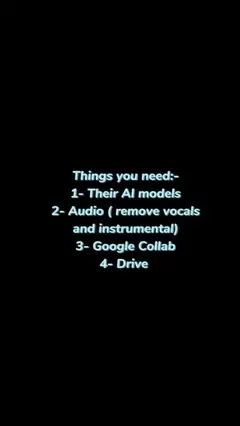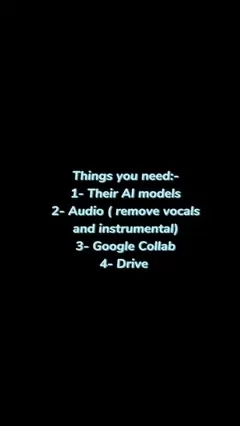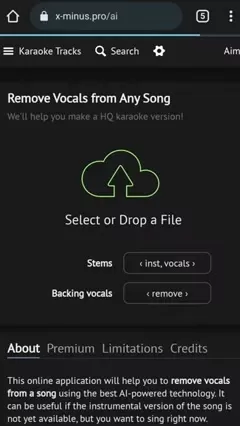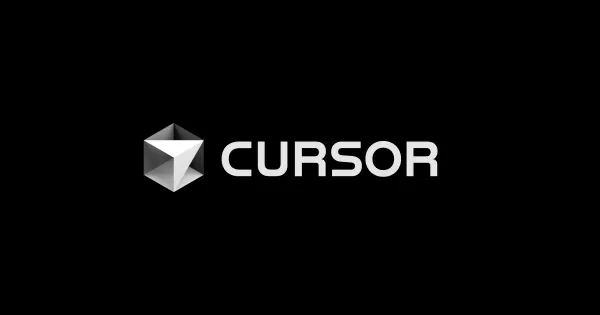AI Voice Cloning: The Ultimate Guide to Mastering Voice Conversion
In the fast-paced world of artificial intelligence, AI voice cloning emerges as a captivating and game-changing technology. This guide will take you on a journey through the intricacies of using AI to clone voices, create innovative audio experiences, and delve into the myriad opportunities this technology presents. From grasping the essential tools and models to following detailed instructions, you'll acquire the skills needed to launch your own voice cloning endeavors. Immerse yourself in the realm of AI voice conversion and unlock a new frontier in audio production.
Key Points for AI Voice Cloning
- Understanding the Basics of AI Voice Cloning
- Necessary Tools: AI Models, Google Collab, and More
- Step-by-Step Instructions for Voice Conversion
- Tips for Removing Vocals and Isolating Instrumentals
- Optimizing Audio Quality for AI Cloning
- Exploring Ethical Considerations and Responsible Use
- Troubleshooting Common Issues in Voice Cloning
- Future Trends in AI Voice Cloning Technology
Getting Started with AI Voice Cloning
What is AI Voice Cloning?
At its essence, AI voice cloning uses artificial intelligence to mimic and recreate a person's voice. It's not just about basic voice synthesis; it's about capturing the subtleties, inflections, and unique traits that make a voice truly individual. This process involves training AI models on existing audio data to discern the patterns and features of a specific voice. Once trained, these models can produce new speech in the cloned voice, even for phrases the original speaker never uttered.

The applications of AI voice cloning are expansive, spanning entertainment, content creation, accessibility, and personal assistance. It opens doors to creating tailored audiobooks, personalized messages, and even resurrecting the voices of historical figures or loved ones who have passed (with the right ethical considerations and permissions, of course!). However, it's crucial to handle this technology with care and responsibility, as the power to replicate voices brings up serious questions about consent, authenticity, and potential misuse. Getting to grips with the technology's capabilities and limits is the first step in using it for positive outcomes. Let's dive deeper into what you'll need to embark on this thrilling journey. AI-driven voice cloning has genuinely revolutionized digital media and content creation today.
Tools You Need for AI Voice Cloning
Embarking on your AI Voice Cloning adventure requires a few key tools and resources. Here's what you'll need:
- AI Models: The backbone of voice cloning, these models, often based on deep learning architectures like neural networks, are trained to recognize and replicate vocal patterns. You can find popular models on platforms like Google AI or through open-source projects on GitHub. Be sure to download the AI models of your chosen artist or speaker.

- Audio Files: You'll need high-quality audio files of the voice you want to clone. The better the audio data, the better the clone. Make sure you have the rights to use the audio for cloning purposes.
- Audio Editing Software: This is essential for cleaning up your audio, removing background noise, and isolating vocal tracks. Tools like Audacity (free) or Adobe Audition (paid) are top choices.
- Google Collab: A free, cloud-based platform by Google that lets you run Python code, including the complex computations needed for AI voice cloning. It provides access to powerful GPUs and TPUs, making the process much faster and more efficient. You'll also be using the Easy GUI for RVC on Google Collab.
- Google Drive: To store your AI models, audio files, and any generated content. Google Drive offers ample storage and easy access for Google Collab.
With these tools at your fingertips, you're well-equipped to create realistic and compelling AI voice clones. Let's now move on to setting up these tools.
Additional Tips for High-Quality Voice Cloning
Optimizing Audio Input
The quality of your input audio plays a huge role in the quality of the cloned voice. Record in a quiet space with minimal background noise. Use a high-quality microphone to capture the full spectrum of your voice. Edit the audio to remove any unnecessary pauses or filler words. Normalizing the audio levels can also help ensure consistent output. By focusing on these details, you'll provide the AI model with the best possible data to work with.
Ethical Considerations and Best Practices
AI voice cloning comes with several ethical considerations that you must be mindful of. Always obtain consent from the person whose voice you're cloning. Be transparent about using AI-generated voices and steer clear of any deceptive practices. Use the technology responsibly and avoid creating content that could be harmful or misleading. Respect copyright and intellectual property rights. By following these ethical guidelines, you can help ensure that AI voice cloning is used for positive purposes and that its potential isn't undermined by misuse. You can also download any artist models from Discord.

Step-by-Step Guide to AI Voice Cloning
Step 1: Downloading AI Models
Start by downloading the AI models you need. Many current RVC models will only use voice models that end with RVC, so make sure your chosen artist or speaker has that file available.

You can find these on Discord servers dedicated to AI voice cloning or through shared links from other enthusiasts. Ensure that the models are compatible with the voice cloning software you intend to use.
Step 2: Preparing Audio Data
Clean and prepare the audio data for the voice you want to clone. Remove background noise, isolate the vocal tracks, and ensure the audio quality is high. Audio editing software can help with this process. High-quality audio data is crucial for the AI model to learn and replicate the voice effectively.

Websites like x-minus.pro can help you remove vocals and instrumentals from your audio.
Step 3: Setting Up Google Collab
- Access Google Collab: Open Google Collab in your web browser.

- Upload Essential Files: Upload your AI model and audio files to your Google Drive.
- Connect to Runtime: Connect Google Collab to a runtime environment (GPU or TPU) to speed up processing. This will allow Google Collab to access the Python 3 Google Compute Engine backend for faster speeds.
Step 4: Running the Voice Cloning Process
- Install Necessary Libraries: Execute the code cells in Google Collab to install the required libraries and dependencies for voice cloning.
- Load AI Model: Load your AI model into Google Collab.

- Input Audio: Provide the audio you want to convert. This could be your own voice recording or another audio file.
- Convert Voice: Run the voice conversion process. The AI model will transform the input audio into the cloned voice.
Step 5: Refining and Downloading
- Listen to Output: Review the converted audio for any artifacts or inconsistencies.
- Adjust Parameters: Refine the parameters in Google Collab to optimize the voice cloning process.

- Download Converted Audio: Once you're satisfied, download the converted audio file. Choose a suitable format (e.g., WAV or MP3).
Pricing and Availability of Tools
Google Collab
Google Collab is a free service that offers access to cloud-based computing resources, including GPUs and TPUs. This makes it an accessible option for running AI models. However, there are usage limits, and you may need to upgrade to a paid plan (Collab Pro or Collab Pro+) for more resources and longer runtime.
Audio Editing Software
Audacity is a free and open-source audio editor that offers a wide range of features for cleaning up and editing audio. Paid options like Adobe Audition provide more advanced tools but come with a monthly or annual subscription fee. The best option for you will depend on your budget and the complexity of your projects.
Pros and Cons of AI Voice Cloning
Pros
- Ability to replicate specific voices accurately
- Enhanced content creation capabilities
- Potential for accessibility solutions for individuals with speech impairments
- Creation of virtual concerts featuring cloned voices of deceased artists
- Availability of voice banking services to preserve personal voices
- Ability to use as virtual assistants or personalized voice messages
Cons
- Ethical concerns around consent and authenticity
- Potential misuse for harmful or misleading content
- Risk of copyright and intellectual property infringement
- Need for large amounts of high-quality audio data for training
- Potential for cloned voices to sound unnatural or robotic
- Computational intensity requiring powerful hardware or cloud-based computing resources
Key Features of AI Voice Cloning Technology
Voice Replication
The core feature of AI voice cloning is the ability to replicate a specific voice with remarkable accuracy. AI models analyze audio data to learn the unique characteristics of a voice, including tone, pitch, rhythm, and intonation. Once trained, the model can generate new speech in the cloned voice, even for content that the original speaker never actually voiced. This feature enables the creation of customized audiobooks, personalized messages, and virtual assistants that sound just like a specific person.
Voice Conversion
Voice conversion is the process of transforming one person's voice into another. This technology allows you to take an existing audio recording and change the speaker's voice to a cloned voice. Voice conversion is useful for creating voiceovers for videos, dubbing movies, and generating speech in different languages. The process involves analyzing the source voice and then applying the characteristics of the target voice to create a seamless and natural-sounding transformation.
Use Cases for AI Voice Cloning
Content Creation
AI voice cloning opens up new possibilities for content creation, allowing you to create unique audio experiences. You can clone your voice to create personalized messages, virtual assistants, and educational content. This technology also allows you to generate voiceovers for videos, audiobooks, and podcasts. Content creators can leverage AI voice cloning to experiment with different voices and create content that stands out from the crowd.
Accessibility
AI voice cloning offers solutions for individuals with speech impairments. By cloning a person's voice, it is possible to create assistive technologies that enable them to communicate more effectively. Cloning technology can also be used to provide voice banking services, allowing people to preserve their voices before losing them due to medical conditions. This technology can improve accessibility and inclusivity for individuals with communication challenges.
Entertainment
AI voice cloning can be used to create new forms of entertainment. AI-generated voices can be used to dub movies, create animated characters, and produce immersive gaming experiences. This technology also enables the creation of virtual concerts featuring cloned voices of deceased artists. Cloning opens up possibilities for interactive storytelling and personalized entertainment experiences that cater to individual preferences.
Frequently Asked Questions about AI Voice Cloning
Is AI voice cloning ethical?
The ethical considerations of AI voice cloning are complex and depend on how the technology is used. Obtaining consent from the person whose voice is being cloned is essential. Transparency about using AI-generated voices is also critical to avoid deception. Responsible use of this technology involves respecting copyright, intellectual property rights, and avoiding the creation of harmful or misleading content. Adhering to these ethical guidelines will help ensure that AI voice cloning is used for good.
What are the limitations of AI voice cloning?
AI voice cloning is not without limitations. The quality of the cloned voice depends on the amount and quality of the training data. Models may struggle to replicate voices with complex vocal patterns or accents. AI-generated voices may also sound unnatural or robotic if not properly refined. Additionally, AI voice cloning can be computationally intensive and require access to powerful hardware or cloud-based computing resources. As the technology evolves, many of these limitations will be addressed.
Can I use AI voice cloning to create commercial projects?
You can use AI voice cloning for commercial projects. The feasibility and legality of using AI voice cloning for commercial projects depend on several factors. Ensure that you have the necessary rights to use the audio data for cloning purposes. Comply with all relevant copyright and intellectual property laws. Be transparent with your audience about using AI-generated voices. By addressing these considerations, you can use AI voice cloning for commercial projects while avoiding legal and ethical pitfalls. Consider purchasing and/or using the premium subscription for the best commercial application.
Related Questions about Voice Cloning
What is Google Collab and how does it work?
Google Collab is a cloud-based platform by Google that allows you to run Python code in a collaborative environment. It provides access to powerful computing resources, including GPUs and TPUs, making it ideal for machine learning projects. Google Collab works by providing a Jupyter notebook interface where you can write and execute code. You can upload files to Google Drive and access them directly from your Collab notebooks. Additionally, Google Collab integrates with other Google services, making it easy to share your work and collaborate with others. Google Collab is free to use, but there are usage limits. You may need to upgrade to a paid plan for more resources and longer runtime.
Where can I find AI voice models to use in the cloning process?
AI voice models can be found from various sources. One option is open-source platforms like GitHub, where developers share their trained AI models. Another option is through Discord servers dedicated to AI voice cloning. Be mindful of models listed as SVC models as that is a whole other process separate from RVC.
Related article
 "Exploring AI Safety & Ethics: Insights from Databricks and ElevenLabs Experts"
As generative AI becomes increasingly affordable and widespread, ethical considerations and security measures have taken center stage. ElevenLabs' AI Safety Lead Artemis Seaford and Databricks co-creator Ion Stoica participated in an insightful dia
"Exploring AI Safety & Ethics: Insights from Databricks and ElevenLabs Experts"
As generative AI becomes increasingly affordable and widespread, ethical considerations and security measures have taken center stage. ElevenLabs' AI Safety Lead Artemis Seaford and Databricks co-creator Ion Stoica participated in an insightful dia
 Truth Social’s New AI Search Engine Heavily Favors Fox News in Results
Trump's social media platform introduces an AI-powered search function with apparent conservative media slantExclusive AI Search Feature LaunchesTruth Social, the social media platform founded by Donald Trump, has rolled out its new artificial intell
Truth Social’s New AI Search Engine Heavily Favors Fox News in Results
Trump's social media platform introduces an AI-powered search function with apparent conservative media slantExclusive AI Search Feature LaunchesTruth Social, the social media platform founded by Donald Trump, has rolled out its new artificial intell
 Cursor Acquires Koala in Bid to Compete With GitHub Copilot
The startup behind viral AI coding platform Cursor is aggressively recruiting top engineering talent from rival AI firms as it escalates competition with Microsoft's GitHub Copilot. Recent moves include acquiring talent from AI-powered CRM startup Ko
Comments (3)
0/200
Cursor Acquires Koala in Bid to Compete With GitHub Copilot
The startup behind viral AI coding platform Cursor is aggressively recruiting top engineering talent from rival AI firms as it escalates competition with Microsoft's GitHub Copilot. Recent moves include acquiring talent from AI-powered CRM startup Ko
Comments (3)
0/200
![JackPerez]() JackPerez
JackPerez
 August 22, 2025 at 3:01:25 PM EDT
August 22, 2025 at 3:01:25 PM EDT
This guide on AI voice cloning is mind-blowing! 😮 The idea of creating realistic voices for audio projects feels like sci-fi magic. Can’t wait to try it out for my podcast!


 0
0
![WilliamAllen]() WilliamAllen
WilliamAllen
 August 8, 2025 at 9:00:59 PM EDT
August 8, 2025 at 9:00:59 PM EDT
This AI voice cloning guide is mind-blowing! 😮 The tech sounds like magic, but I wonder how it’ll impact voice actors’ jobs.


 0
0
![DavidGreen]() DavidGreen
DavidGreen
 August 4, 2025 at 4:40:05 AM EDT
August 4, 2025 at 4:40:05 AM EDT
This AI voice cloning guide is mind-blowing! It’s wild to think we can recreate voices so realistically. I’m curious how this tech might change podcasting or even trick scammers. 😎 Anyone else worried about deepfake voices getting too good?


 0
0
In the fast-paced world of artificial intelligence, AI voice cloning emerges as a captivating and game-changing technology. This guide will take you on a journey through the intricacies of using AI to clone voices, create innovative audio experiences, and delve into the myriad opportunities this technology presents. From grasping the essential tools and models to following detailed instructions, you'll acquire the skills needed to launch your own voice cloning endeavors. Immerse yourself in the realm of AI voice conversion and unlock a new frontier in audio production.
Key Points for AI Voice Cloning
- Understanding the Basics of AI Voice Cloning
- Necessary Tools: AI Models, Google Collab, and More
- Step-by-Step Instructions for Voice Conversion
- Tips for Removing Vocals and Isolating Instrumentals
- Optimizing Audio Quality for AI Cloning
- Exploring Ethical Considerations and Responsible Use
- Troubleshooting Common Issues in Voice Cloning
- Future Trends in AI Voice Cloning Technology
Getting Started with AI Voice Cloning
What is AI Voice Cloning?
At its essence, AI voice cloning uses artificial intelligence to mimic and recreate a person's voice. It's not just about basic voice synthesis; it's about capturing the subtleties, inflections, and unique traits that make a voice truly individual. This process involves training AI models on existing audio data to discern the patterns and features of a specific voice. Once trained, these models can produce new speech in the cloned voice, even for phrases the original speaker never uttered.

The applications of AI voice cloning are expansive, spanning entertainment, content creation, accessibility, and personal assistance. It opens doors to creating tailored audiobooks, personalized messages, and even resurrecting the voices of historical figures or loved ones who have passed (with the right ethical considerations and permissions, of course!). However, it's crucial to handle this technology with care and responsibility, as the power to replicate voices brings up serious questions about consent, authenticity, and potential misuse. Getting to grips with the technology's capabilities and limits is the first step in using it for positive outcomes. Let's dive deeper into what you'll need to embark on this thrilling journey. AI-driven voice cloning has genuinely revolutionized digital media and content creation today.
Tools You Need for AI Voice Cloning
Embarking on your AI Voice Cloning adventure requires a few key tools and resources. Here's what you'll need:
- AI Models: The backbone of voice cloning, these models, often based on deep learning architectures like neural networks, are trained to recognize and replicate vocal patterns. You can find popular models on platforms like Google AI or through open-source projects on GitHub. Be sure to download the AI models of your chosen artist or speaker.
- Audio Files: You'll need high-quality audio files of the voice you want to clone. The better the audio data, the better the clone. Make sure you have the rights to use the audio for cloning purposes.
- Audio Editing Software: This is essential for cleaning up your audio, removing background noise, and isolating vocal tracks. Tools like Audacity (free) or Adobe Audition (paid) are top choices.
- Google Collab: A free, cloud-based platform by Google that lets you run Python code, including the complex computations needed for AI voice cloning. It provides access to powerful GPUs and TPUs, making the process much faster and more efficient. You'll also be using the Easy GUI for RVC on Google Collab.
- Google Drive: To store your AI models, audio files, and any generated content. Google Drive offers ample storage and easy access for Google Collab.

With these tools at your fingertips, you're well-equipped to create realistic and compelling AI voice clones. Let's now move on to setting up these tools.
Additional Tips for High-Quality Voice Cloning
Optimizing Audio Input
The quality of your input audio plays a huge role in the quality of the cloned voice. Record in a quiet space with minimal background noise. Use a high-quality microphone to capture the full spectrum of your voice. Edit the audio to remove any unnecessary pauses or filler words. Normalizing the audio levels can also help ensure consistent output. By focusing on these details, you'll provide the AI model with the best possible data to work with.
Ethical Considerations and Best Practices
AI voice cloning comes with several ethical considerations that you must be mindful of. Always obtain consent from the person whose voice you're cloning. Be transparent about using AI-generated voices and steer clear of any deceptive practices. Use the technology responsibly and avoid creating content that could be harmful or misleading. Respect copyright and intellectual property rights. By following these ethical guidelines, you can help ensure that AI voice cloning is used for positive purposes and that its potential isn't undermined by misuse. You can also download any artist models from Discord.

Step-by-Step Guide to AI Voice Cloning
Step 1: Downloading AI Models
Start by downloading the AI models you need. Many current RVC models will only use voice models that end with RVC, so make sure your chosen artist or speaker has that file available.

You can find these on Discord servers dedicated to AI voice cloning or through shared links from other enthusiasts. Ensure that the models are compatible with the voice cloning software you intend to use.
Step 2: Preparing Audio Data
Clean and prepare the audio data for the voice you want to clone. Remove background noise, isolate the vocal tracks, and ensure the audio quality is high. Audio editing software can help with this process. High-quality audio data is crucial for the AI model to learn and replicate the voice effectively.

Websites like x-minus.pro can help you remove vocals and instrumentals from your audio.
Step 3: Setting Up Google Collab
- Access Google Collab: Open Google Collab in your web browser.
- Upload Essential Files: Upload your AI model and audio files to your Google Drive.
- Connect to Runtime: Connect Google Collab to a runtime environment (GPU or TPU) to speed up processing. This will allow Google Collab to access the Python 3 Google Compute Engine backend for faster speeds.

Step 4: Running the Voice Cloning Process
- Install Necessary Libraries: Execute the code cells in Google Collab to install the required libraries and dependencies for voice cloning.
- Load AI Model: Load your AI model into Google Collab.
- Input Audio: Provide the audio you want to convert. This could be your own voice recording or another audio file.
- Convert Voice: Run the voice conversion process. The AI model will transform the input audio into the cloned voice.

Step 5: Refining and Downloading
- Listen to Output: Review the converted audio for any artifacts or inconsistencies.
- Adjust Parameters: Refine the parameters in Google Collab to optimize the voice cloning process.
- Download Converted Audio: Once you're satisfied, download the converted audio file. Choose a suitable format (e.g., WAV or MP3).

Pricing and Availability of Tools
Google Collab
Google Collab is a free service that offers access to cloud-based computing resources, including GPUs and TPUs. This makes it an accessible option for running AI models. However, there are usage limits, and you may need to upgrade to a paid plan (Collab Pro or Collab Pro+) for more resources and longer runtime.
Audio Editing Software
Audacity is a free and open-source audio editor that offers a wide range of features for cleaning up and editing audio. Paid options like Adobe Audition provide more advanced tools but come with a monthly or annual subscription fee. The best option for you will depend on your budget and the complexity of your projects.
Pros and Cons of AI Voice Cloning
Pros
- Ability to replicate specific voices accurately
- Enhanced content creation capabilities
- Potential for accessibility solutions for individuals with speech impairments
- Creation of virtual concerts featuring cloned voices of deceased artists
- Availability of voice banking services to preserve personal voices
- Ability to use as virtual assistants or personalized voice messages
Cons
- Ethical concerns around consent and authenticity
- Potential misuse for harmful or misleading content
- Risk of copyright and intellectual property infringement
- Need for large amounts of high-quality audio data for training
- Potential for cloned voices to sound unnatural or robotic
- Computational intensity requiring powerful hardware or cloud-based computing resources
Key Features of AI Voice Cloning Technology
Voice Replication
The core feature of AI voice cloning is the ability to replicate a specific voice with remarkable accuracy. AI models analyze audio data to learn the unique characteristics of a voice, including tone, pitch, rhythm, and intonation. Once trained, the model can generate new speech in the cloned voice, even for content that the original speaker never actually voiced. This feature enables the creation of customized audiobooks, personalized messages, and virtual assistants that sound just like a specific person.
Voice Conversion
Voice conversion is the process of transforming one person's voice into another. This technology allows you to take an existing audio recording and change the speaker's voice to a cloned voice. Voice conversion is useful for creating voiceovers for videos, dubbing movies, and generating speech in different languages. The process involves analyzing the source voice and then applying the characteristics of the target voice to create a seamless and natural-sounding transformation.
Use Cases for AI Voice Cloning
Content Creation
AI voice cloning opens up new possibilities for content creation, allowing you to create unique audio experiences. You can clone your voice to create personalized messages, virtual assistants, and educational content. This technology also allows you to generate voiceovers for videos, audiobooks, and podcasts. Content creators can leverage AI voice cloning to experiment with different voices and create content that stands out from the crowd.
Accessibility
AI voice cloning offers solutions for individuals with speech impairments. By cloning a person's voice, it is possible to create assistive technologies that enable them to communicate more effectively. Cloning technology can also be used to provide voice banking services, allowing people to preserve their voices before losing them due to medical conditions. This technology can improve accessibility and inclusivity for individuals with communication challenges.
Entertainment
AI voice cloning can be used to create new forms of entertainment. AI-generated voices can be used to dub movies, create animated characters, and produce immersive gaming experiences. This technology also enables the creation of virtual concerts featuring cloned voices of deceased artists. Cloning opens up possibilities for interactive storytelling and personalized entertainment experiences that cater to individual preferences.
Frequently Asked Questions about AI Voice Cloning
Is AI voice cloning ethical?
The ethical considerations of AI voice cloning are complex and depend on how the technology is used. Obtaining consent from the person whose voice is being cloned is essential. Transparency about using AI-generated voices is also critical to avoid deception. Responsible use of this technology involves respecting copyright, intellectual property rights, and avoiding the creation of harmful or misleading content. Adhering to these ethical guidelines will help ensure that AI voice cloning is used for good.
What are the limitations of AI voice cloning?
AI voice cloning is not without limitations. The quality of the cloned voice depends on the amount and quality of the training data. Models may struggle to replicate voices with complex vocal patterns or accents. AI-generated voices may also sound unnatural or robotic if not properly refined. Additionally, AI voice cloning can be computationally intensive and require access to powerful hardware or cloud-based computing resources. As the technology evolves, many of these limitations will be addressed.
Can I use AI voice cloning to create commercial projects?
You can use AI voice cloning for commercial projects. The feasibility and legality of using AI voice cloning for commercial projects depend on several factors. Ensure that you have the necessary rights to use the audio data for cloning purposes. Comply with all relevant copyright and intellectual property laws. Be transparent with your audience about using AI-generated voices. By addressing these considerations, you can use AI voice cloning for commercial projects while avoiding legal and ethical pitfalls. Consider purchasing and/or using the premium subscription for the best commercial application.
Related Questions about Voice Cloning
What is Google Collab and how does it work?
Google Collab is a cloud-based platform by Google that allows you to run Python code in a collaborative environment. It provides access to powerful computing resources, including GPUs and TPUs, making it ideal for machine learning projects. Google Collab works by providing a Jupyter notebook interface where you can write and execute code. You can upload files to Google Drive and access them directly from your Collab notebooks. Additionally, Google Collab integrates with other Google services, making it easy to share your work and collaborate with others. Google Collab is free to use, but there are usage limits. You may need to upgrade to a paid plan for more resources and longer runtime.
Where can I find AI voice models to use in the cloning process?
AI voice models can be found from various sources. One option is open-source platforms like GitHub, where developers share their trained AI models. Another option is through Discord servers dedicated to AI voice cloning. Be mindful of models listed as SVC models as that is a whole other process separate from RVC.
 "Exploring AI Safety & Ethics: Insights from Databricks and ElevenLabs Experts"
As generative AI becomes increasingly affordable and widespread, ethical considerations and security measures have taken center stage. ElevenLabs' AI Safety Lead Artemis Seaford and Databricks co-creator Ion Stoica participated in an insightful dia
"Exploring AI Safety & Ethics: Insights from Databricks and ElevenLabs Experts"
As generative AI becomes increasingly affordable and widespread, ethical considerations and security measures have taken center stage. ElevenLabs' AI Safety Lead Artemis Seaford and Databricks co-creator Ion Stoica participated in an insightful dia
 Truth Social’s New AI Search Engine Heavily Favors Fox News in Results
Trump's social media platform introduces an AI-powered search function with apparent conservative media slantExclusive AI Search Feature LaunchesTruth Social, the social media platform founded by Donald Trump, has rolled out its new artificial intell
Truth Social’s New AI Search Engine Heavily Favors Fox News in Results
Trump's social media platform introduces an AI-powered search function with apparent conservative media slantExclusive AI Search Feature LaunchesTruth Social, the social media platform founded by Donald Trump, has rolled out its new artificial intell
 Cursor Acquires Koala in Bid to Compete With GitHub Copilot
The startup behind viral AI coding platform Cursor is aggressively recruiting top engineering talent from rival AI firms as it escalates competition with Microsoft's GitHub Copilot. Recent moves include acquiring talent from AI-powered CRM startup Ko
Cursor Acquires Koala in Bid to Compete With GitHub Copilot
The startup behind viral AI coding platform Cursor is aggressively recruiting top engineering talent from rival AI firms as it escalates competition with Microsoft's GitHub Copilot. Recent moves include acquiring talent from AI-powered CRM startup Ko
 August 22, 2025 at 3:01:25 PM EDT
August 22, 2025 at 3:01:25 PM EDT
This guide on AI voice cloning is mind-blowing! 😮 The idea of creating realistic voices for audio projects feels like sci-fi magic. Can’t wait to try it out for my podcast!


 0
0
 August 8, 2025 at 9:00:59 PM EDT
August 8, 2025 at 9:00:59 PM EDT
This AI voice cloning guide is mind-blowing! 😮 The tech sounds like magic, but I wonder how it’ll impact voice actors’ jobs.


 0
0
 August 4, 2025 at 4:40:05 AM EDT
August 4, 2025 at 4:40:05 AM EDT
This AI voice cloning guide is mind-blowing! It’s wild to think we can recreate voices so realistically. I’m curious how this tech might change podcasting or even trick scammers. 😎 Anyone else worried about deepfake voices getting too good?


 0
0





























